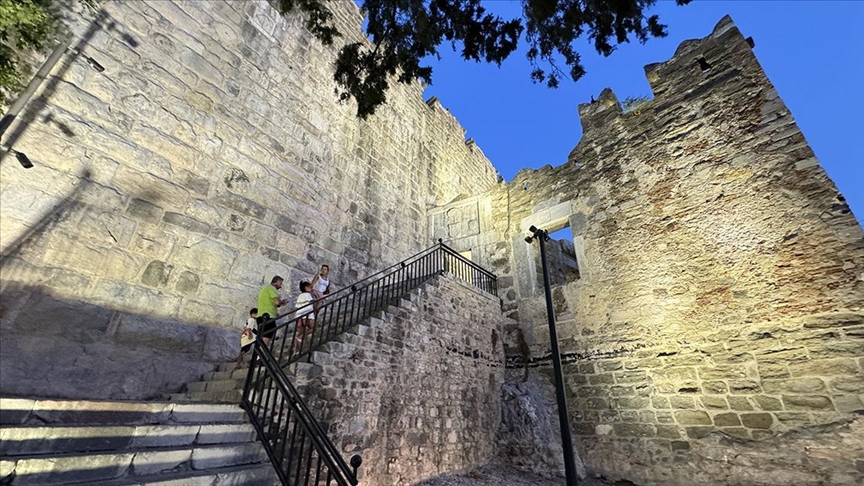7 artifacts repatriated from Switzerland to be exhibited at Bodrum Castle
‘Everyone now knows that if they buy an artifact smuggled from Türkiye and bring it to light, the Turkish government will notice, and bring it back,’ says culture and tourism minister

ANKARA
Seven artifacts that were repatriated from Switzerland will be exhibited at Bodrum Castle, said Turkish Minister of Culture and Tourism Mehmet Nuri Ersoy.
According to a statement from the ministry, under the Agreement on the Prevention of Illicit Trafficking of Cultural Property signed between Türkiye and Switzerland in 2022, seven artifacts from the Late Bronze Age and Roman period were returned to Türkiye under the coordination of the General Directorate of Cultural Assets and Museums after it was determined that they had been removed from Anatolia without permission.
Ersoy presented the historical artifacts to the public at Bodrum Castle on Monday, which had been returned by Swiss authorities.
Speaking at the castle, Ersoy said the cooperation protocol with Switzerland on combating the smuggling of cultural property was yielding positive results, noting that once the artifacts were seized, Swiss authorities contacted their Turkish counterparts and returned the pieces under the protocol.
Noting that meticulous work by the Department for Combating Smuggling and museum experts proved the artifacts’ Anatolian origin and that they were removed without authorization, Ersoy expressed satisfaction at adding the seven items to the collection.
Ersoy said the artifacts will be exhibited at Bodrum Castle. “As you know, this is neither the first nor the last artifact. Our Department for Combating Smuggling continues, with great dedication, its work worldwide to track all artifacts removed from Anatolia without permission.”
He stressed that each artifact repatriated from abroad sends a strong message to international collectors and underlined that those who add Turkish-origin, illicit cultural property to their portfolios are now taking a major risk.
Ersoy noted that when items surface, Turkish authorities immediately step in.
“They now know that the Turkish government will notice right away and, no matter how long it takes, ensure that these artifacts return to their country, to Anatolia,” he said.
The Artifacts
The artifacts, seized by the Swiss Federal Office of Culture in the Canton of St. Gallen as part of a criminal investigation and returned to Türkiye, are of great archaeological and cultural significance.
The artifacts include Late Bronze Age votive figurines of men and women with gilded faces and belt sections. Assessed as cult objects offered to deities and believed to protect the areas where they were placed, these figurines closely match, in form and technique, examples found in the Uluburun Shipwreck, constituting strong archaeological evidence of their Anatolian origin.
The collection includes a rare gold earring produced using the granulation technique. It represents a unique and elegant example of the fine art of jewelry making developed in ancient Anatolia.
A blown-glass balsamarium-type bottle and another glass artifact in the form of a miniature amphora are among the pieces widely used in the Roman period, both in everyday life and as "grave offerings" placed in tombs.
In addition, oil containers from polykandelons, a multi-armed lamp made of greenish-yellow glass dating to the Early Middle Ages, are thought to have been used both in religious rituals and as architectural ornamentation.








